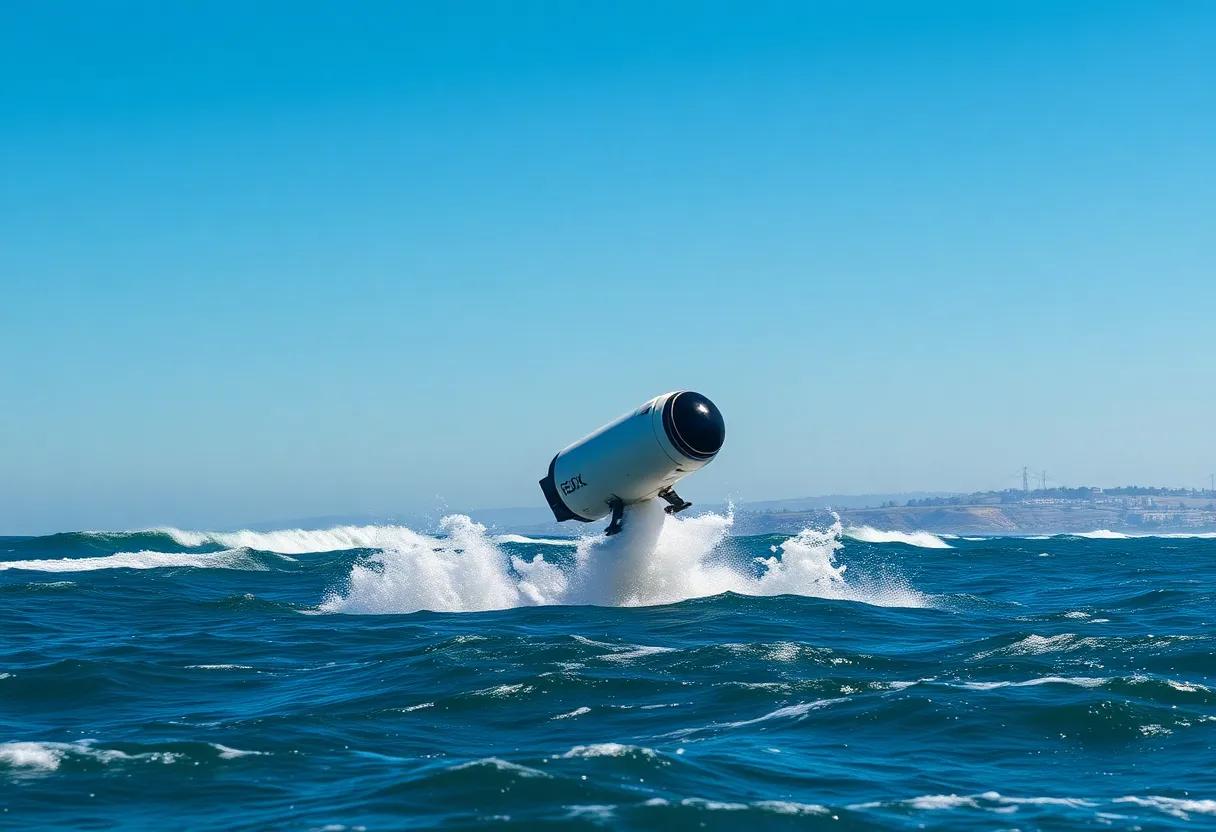News Summary
SpaceX’s Dragon capsule has successfully splashed down in the Pacific Ocean off San Diego, concluding the Axiom Mission 4 (Ax-4) after 18 days at the ISS. The mission featured a diverse crew including astronauts from the U.S., India, Poland, and Hungary, marking a milestone for human spaceflight from these nations. A total of over 60 scientific experiments were conducted during the mission, highlighting the growing role of private companies in space exploration and international collaboration.
San Diego – SpaceX’s Dragon capsule successfully splashed down in the Pacific Ocean off the coast of San Diego early Tuesday morning at 2:31 a.m. PT. This event marked the conclusion of the Axiom Mission 4 (Ax-4), which saw a diverse international crew spend a remarkable 18 days aboard the International Space Station (ISS). The splashdown occurred approximately 30 miles off the coast of California.
The Dragon capsule had undocked from the ISS on Monday morning before making its return journey to Earth. This mission was chartered by Axiom Space, a Houston-based company that has been pivotal in furthering commercial spaceflight initiatives. The crew was led by Peggy Whitson, a veteran astronaut with NASA, representing the United States. Joining her were Shubhanshu Shukla from India, Sławosz Uznański-Wiśniewski from Poland, and Tibor Kapu from Hungary.
Each of the three countries contributed more than $65 million for their astronauts to participate in this significant mission. The Ax-4 mission is particularly noteworthy as it marks the first human spaceflight from India, Poland, and Hungary to the ISS in over 40 years. The previous missions from these nations were conducted in collaboration with the Soviet Union during the late 1970s and 1980s.
During their stay on the ISS, the Ax-4 crew conducted an impressive more than 60 scientific experiments. These research activities aimed at advancing knowledge in various fields and promoting international collaboration in space exploration. The mission was also Axiom Space’s fourth “private astronaut mission” to the ISS, highlighting the increasing role of private companies in space travel and research.
This initiative aligns with NASA’s goals to open up space for more businesses and individuals, paving the way for a new era of commercial spaceflight. The agency, along with other organizations, is actively engaged in developing future space stations, as the current ISS is expected to be retired by 2030.
As the Dragon capsule re-entered the Earth’s atmosphere, residents in Southern California reported hearing a sonic boom, a distinct sound associated with spacecraft re-entries. This event also marked SpaceX’s second human spaceflight mission to splash down off California’s coast, showcasing the reliability and efficiency of its transportation systems.
Throughout their time aboard the ISS, the Ax-4 crew completed approximately 288 orbits around Earth, emphasizing the extensive duration and depth of their mission. SpaceX’s Dragon capsule, renowned as the world’s first orbital-class reusable rocket, is specifically designed for the safe transport of astronauts and payloads, contributing significantly to the evolving landscape of human space exploration.
In summary, the successful completion of the Ax-4 mission underscores the growing importance of international collaboration in space travel, the potential of private sector involvement in space exploration, and the ongoing development of commercial spaceflight programs that could shape the future of human endeavors beyond Earth.
Deeper Dive: News & Info About This Topic
HERE Resources
Additional Resources
- CBS 8 News
- Wikipedia: SpaceX
- Fox 5 San Diego
- Google Search: SpaceX Dragon capsule splash down
- NBC San Diego
- Google Scholar: SpaceX Axiom Mission 4
- Santa Maria Times
- Encyclopedia Britannica: Space Exploration
- MSN News
- Google News: SpaceX splashdown San Diego

Author: STAFF HERE SAN DIEGO WRITER
The SAN DIEGO STAFF WRITER represents the experienced team at HERESanDiego.com, your go-to source for actionable local news and information in San Diego, San Diego County, and beyond. Specializing in "news you can use," we cover essential topics like product reviews for personal and business needs, local business directories, politics, real estate trends, neighborhood insights, and state news affecting the area—with deep expertise drawn from years of dedicated reporting and strong community input, including local press releases and business updates. We deliver top reporting on high-value events such as Comic-Con International, San Diego County Fair, and San Diego Pride Festival. Our coverage extends to key organizations like the San Diego Regional Chamber of Commerce and United Way of San Diego County, plus leading businesses in biotechnology, healthcare, and technology that power the local economy such as Qualcomm, Illumina, and Scripps Health. As part of the broader HERE network, including HEREAnaheim.com, HEREBeverlyHills.com, HERECostaMesa.com, HERECoronado.com, HEREHollywood.com, HEREHuntingtonBeach.com, HERELongBeach.com, HERELosAngeles.com, HEREMissionViejo.com, and HERESantaAna.com, we provide comprehensive, credible insights into California's dynamic landscape.





